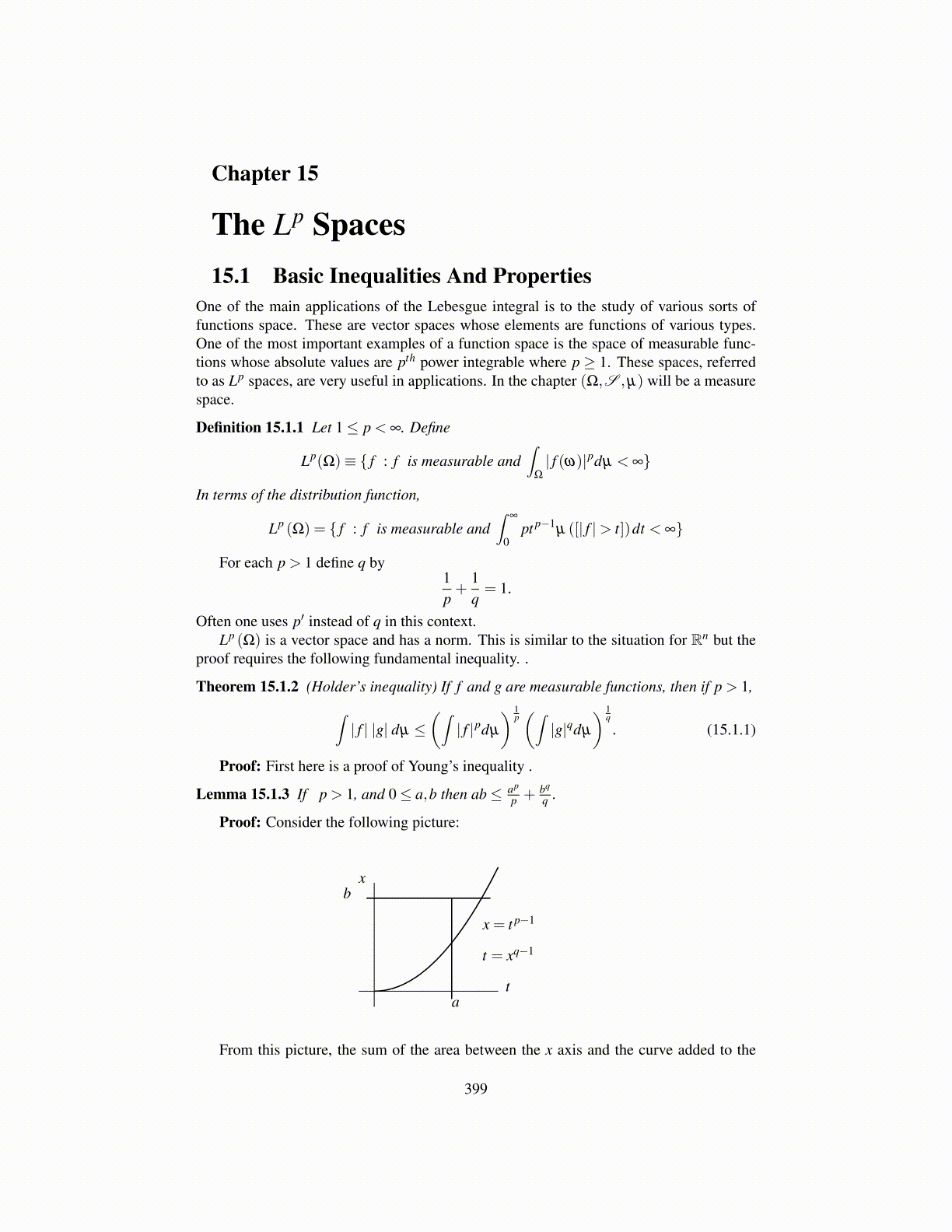
Chapter 15
The Lp Spaces15.1 Basic Inequalities And Properties
One of the main applications of the Lebesgue integral is to the study of various sorts offunctions space. These are vector spaces whose elements are functions of various types.One of the most important examples of a function space is the space of measurable func-tions whose absolute values are pth power integrable where p ≥ 1. These spaces, referredto as Lp spaces, are very useful in applications. In the chapter (Ω,S ,µ) will be a measurespace.
Definition 15.1.1 Let 1≤ p < ∞. Define
Lp(Ω)≡ { f : f is measurable and∫
Ω
| f (ω)|pdµ < ∞}
In terms of the distribution function,
Lp (Ω) = { f : f is measurable and∫
∞
0pt p−1
µ ([| f |> t])dt < ∞}
For each p > 1 define q by1p+
1q= 1.
Often one uses p′ instead of q in this context.Lp (Ω) is a vector space and has a norm. This is similar to the situation for Rn but the
proof requires the following fundamental inequality. .
Theorem 15.1.2 (Holder’s inequality) If f and g are measurable functions, then if p > 1,∫| f | |g| dµ ≤
(∫| f |pdµ
) 1p(∫|g|qdµ
) 1q
. (15.1.1)
Proof: First here is a proof of Young’s inequality .
Lemma 15.1.3 If p > 1, and 0≤ a,b then ab≤ ap
p + bq
q .
Proof: Consider the following picture:
b
a
x
t
x = t p−1
t = xq−1
From this picture, the sum of the area between the x axis and the curve added to the
399